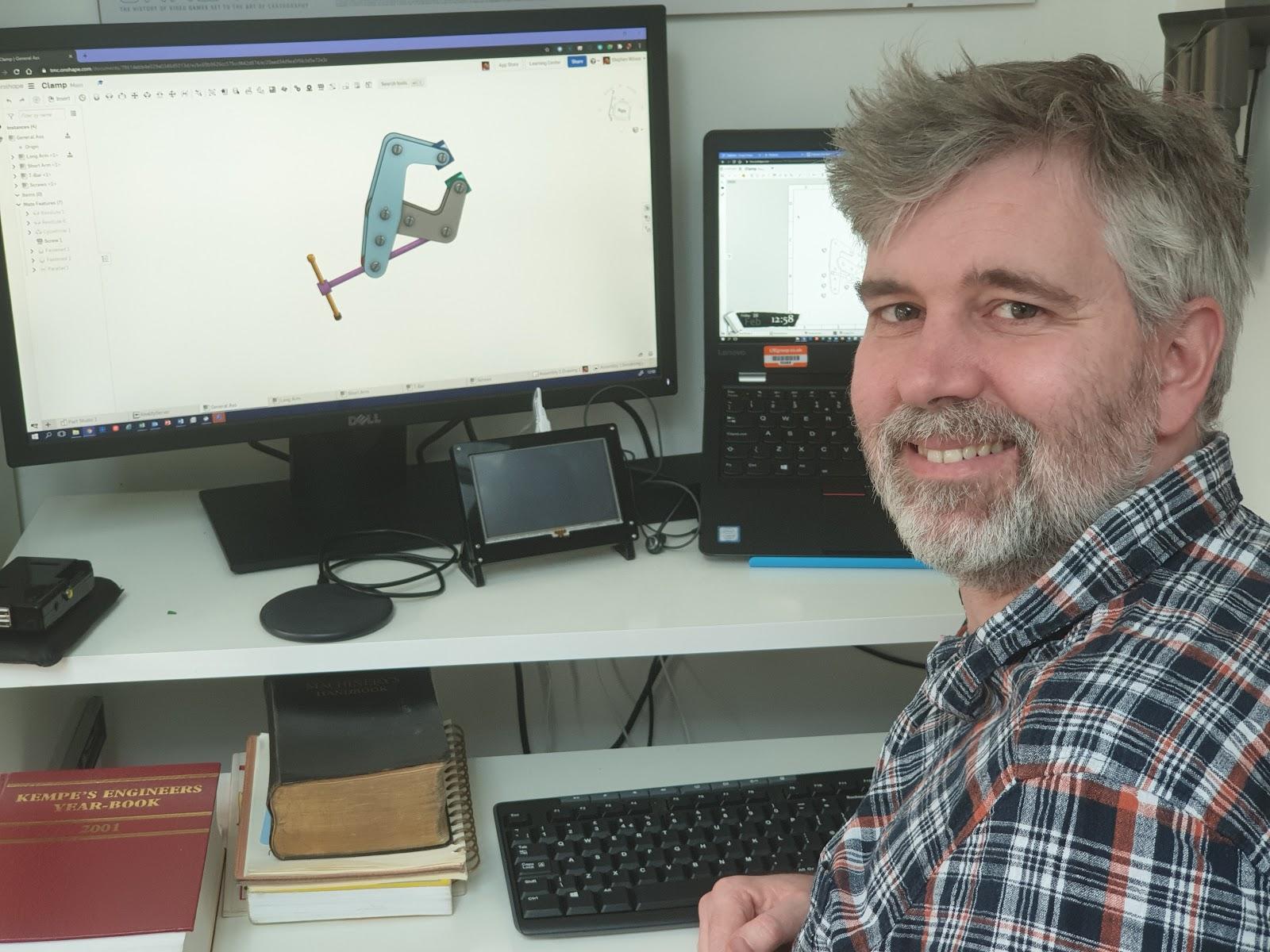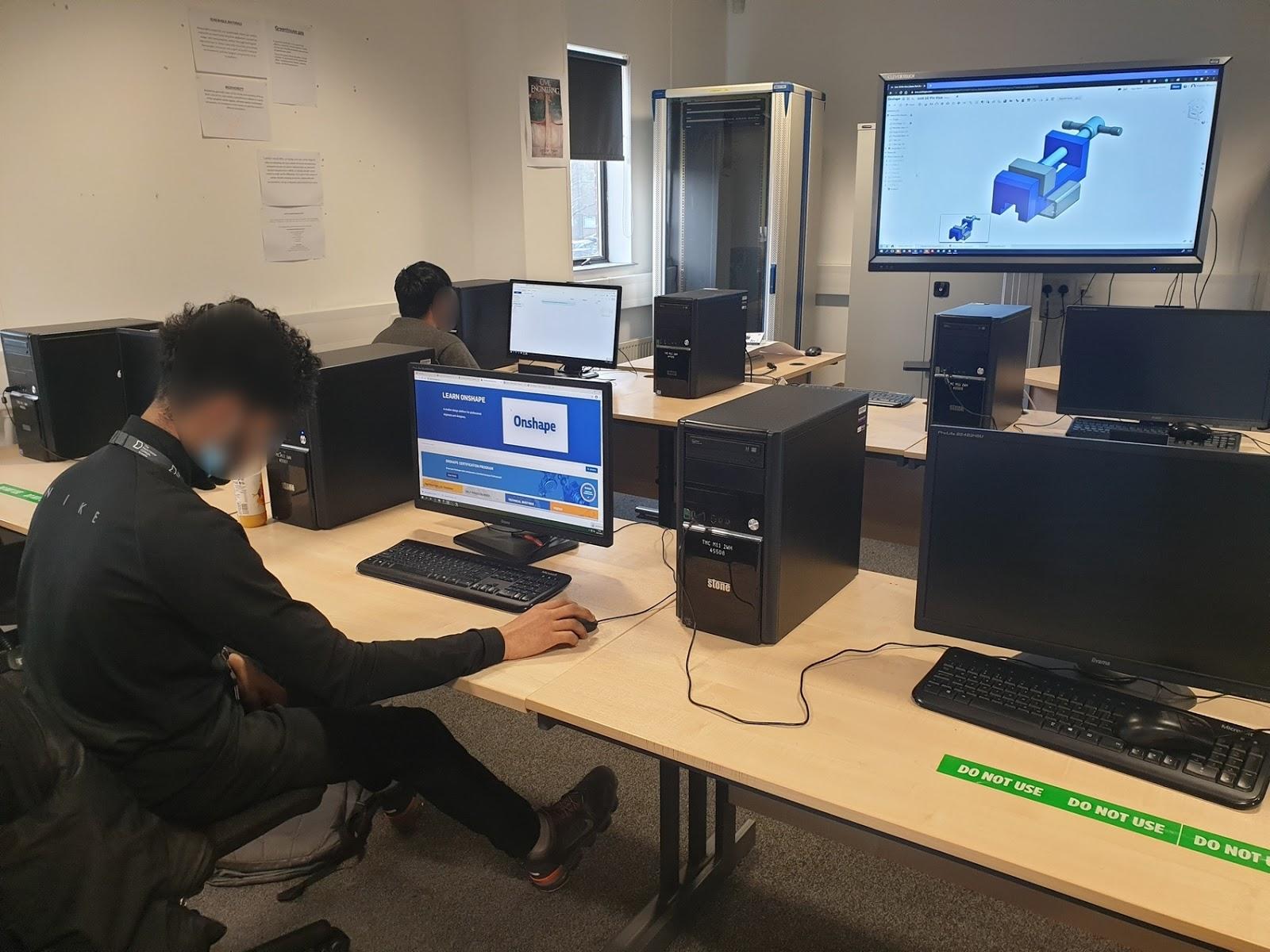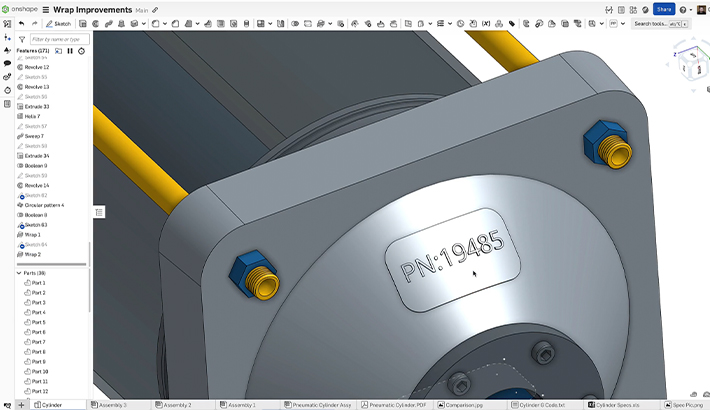To Stephen Wilson, teaching engineering can be a lot like teaching a foreign language.
And he should know. The engineering lecturer followed a four-year engineering degree and placement year with a detour – some time teaching English in South Korea and traveling – before settling into a civil engineering company. But teaching remained in his blood. He returned to the classroom about a decade ago to teach his first love, engineering.
When he joined the staff at The Manchester College in 2018, Wilson knew his students already had a steep learning curve to learn engineering and technical drawing at the same time.
The Manchester College is the largest further education provider in the United Kingdom. Focusing on ages 16-19, “further education” in the UK is the intermediary stage between mandatory education and university, with students who opt out being free to immediately enter the workforce. The college also offers a full slate of vocational training for adults 19+ as well as traditional bachelor’s degree programs. The Manchester College has a proud 200-year history and is a regional pioneer in technical education.
“In the UK, engineering suffers from an image problem,” Wilson says. “It does still have that image. People think that engineering's about hitting bits of a car with a hammer. So in many cases, a lot of my students don't really know what they've signed up for.”
Most students in his general engineering course are working toward their Business and Technology Education Council (BTEC) qualifications, which help get them admitted into a university engineering program. But while in Wilson’s class, they first need to get exposed to a foundation of electrical and mechanical principles, math, physics and design.
Wilson strives to provide his students real-life use cases for the concepts he introduces them to, encouraging them to critically ask “Why?” and “How?” at every step like an engineer.
“I think they quite enjoy CAD in general because it's more hands-on than a page of formulas,” he says.
The Easy Accessibility and Zero-IT Footprint of Cloud CAD

Engineering lecturer Stephen Wilson says Onshape helps him better communicate with his students at The Manchester College, the largest “further education” provider in the United Kingdom. (Courtesy photo.)
To teach his students the fundamentals of product design, Wilson relies on PTC’s Onshape Software-as-a-Service (SaaS) platform, the only cloud-based CAD system that contains built-in data management and real-time collaboration tools.
Skill levels and even exposure to many engineering concepts and tools are quite wide ranging among Wilson’s students, so the easy onramp to Onshape has meant less time fussing with technical details and more time focusing on the basics they will need to progress to the next step of their career path – whether that will be an apprenticeship, a new job or university study.
Using a SaaS platform eliminates the need for cumbersome software installation and upgrades on every single student’s computer.
“The main thing is just its ease of access,” Wilson says. “I came to this college and I didn't have to involve anybody else just to get my students on 3D CAD. And that stuff's massive because before (with an on-premise system) you've got to get your manager's permission and you've got to go through IT and then on and and on...”
“Students can use any computer they’d like – PC, Mac, Chromebook – and start working right away as long as they have an internet connection. Things don't need updating, things don't need installing, I can just point the students at it and let it go,” he adds.

Engineering students at The Manchester College designed this desk organizer using Onshape’s sheet metal features.
A previous user of SOLIDWORKS and AutoCAD in the classroom, Wilson discovered Onshape through a circuitous route – through SimScale, an online platform for CFD, FEA and thermal simulation. The teacher recalls he was “blown away” that SimScale could enable his students to do computational fluid dynamics and finite element analysis in a browser.
“When I was in university, you needed a £10,000 Unix machine to do this,” he says, noting that SimScale’s integration with Onshape made him realize he could now access 3D CAD with the same ease. “Since using Onshape, I’ve never looked back.”
Wilson says he’s been “spoiled by Onshape” and that with installed on-premise CAD systems “everything seems to involve extra steps.”
Those few extra steps can mean all the difference in the attention span of his students, who are phone savvy but not always as digitally savvy as one might expect -- if they even have access to a home computer at all.
“We've got some students from economically disadvantaged backgrounds who don't have a PC at home,” Wilson explains. “Just having them follow a link from an invite from me and then be able to work in their browser is... it's a sigh of relief.”
How Onshape Helps With Remote Learning Challenges

The Manchester College is practicing social distancing protocols in its computer labs during the pandemic, but cloud-based Onshape empowers students to access their CAD work from home on any PC, Mac or Chromebook. (Courtesy photo)
While the COVID-19 pandemic has shut down in-person classes over the past year, Onshape has proven to be especially valuable, Wilson says, noting that his students have continued their engineering lessons while other colleagues have been left scrambling.
In March 2020, Wilson’s curriculum and resources were already accessible online and because he’d had time prior to the lockdown to build relationships with his students, they were well engaged. Onshape made the transition to online teaching seamless, he says.
During its second wave of COVID-19, Manchester was among the hardest hit areas in the United Kingdom. Although the pandemic continues to hamper his classroom teaching in 2021, Wilson says he can count on Onshape to stay better connected to his students. He praised two real-time collaboration features in particular: Comments for enabling pinpoint feedback on design projects; and Follow Mode, which lets users easily follow along with a design presenter in real time for live design reviews and training sessions.
“With Onshape, I’m able to see exactly what my students have been doing and not just what they claim they've been doing,” Wilson says. “Onshape helps me see where the students are at and makes it easy for me to access their work so I can troubleshoot problems and better support them.“
(Learn how your K-12 school or university can benefit from PTC’s free Onshape Education plan.)















